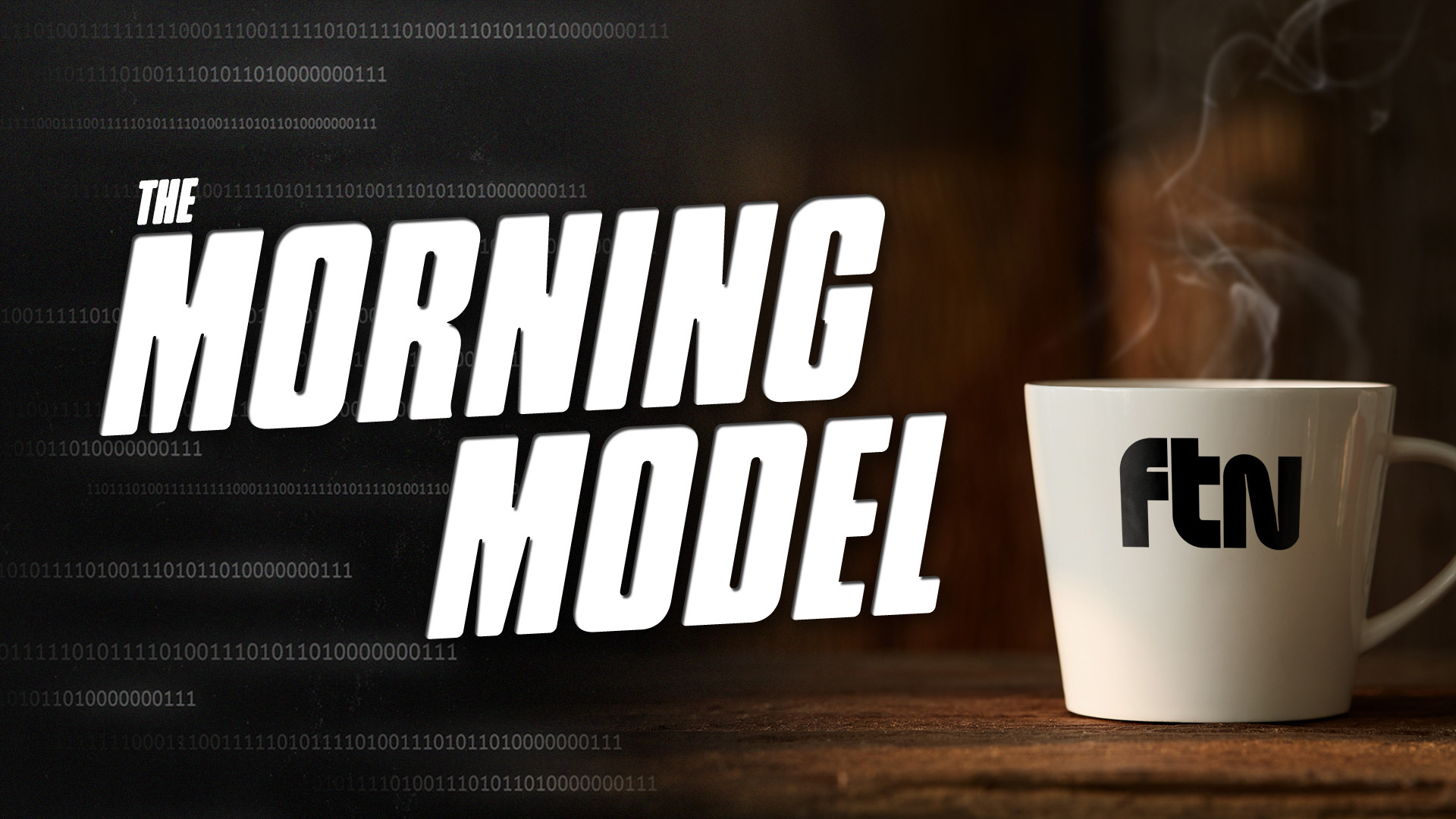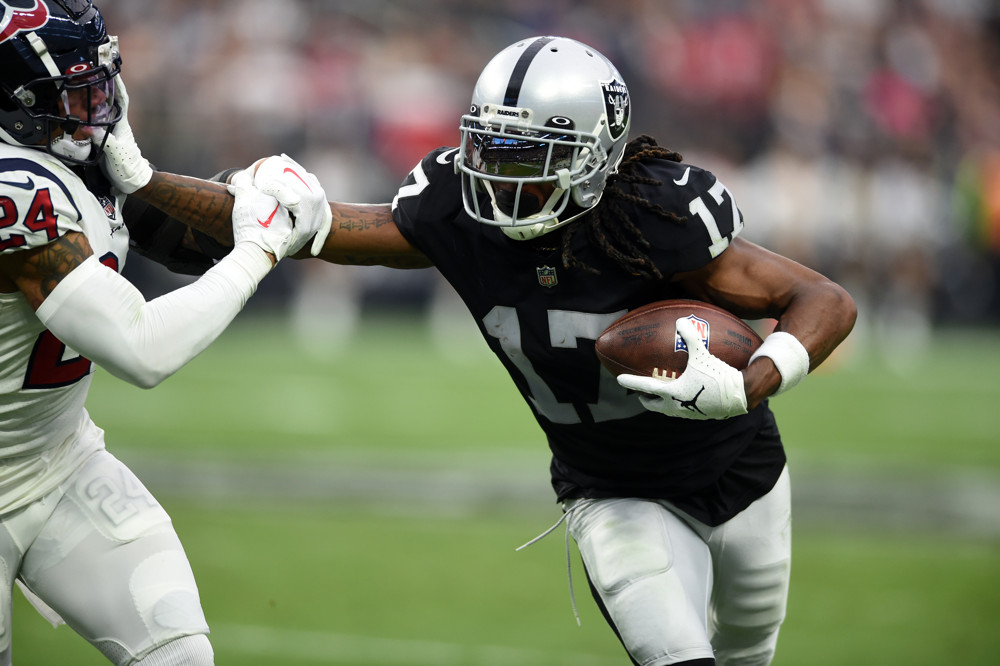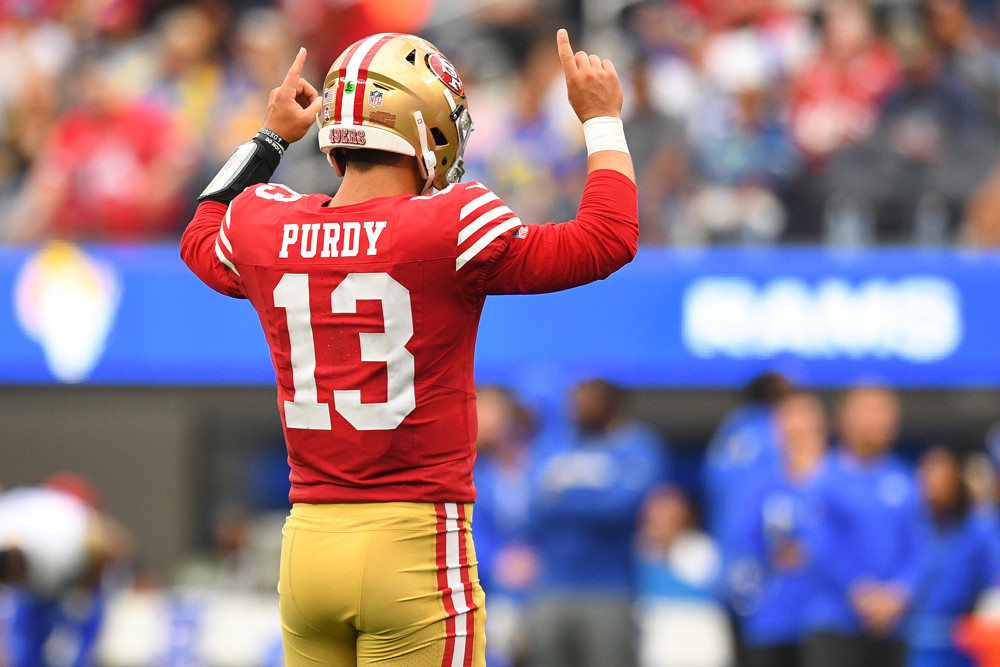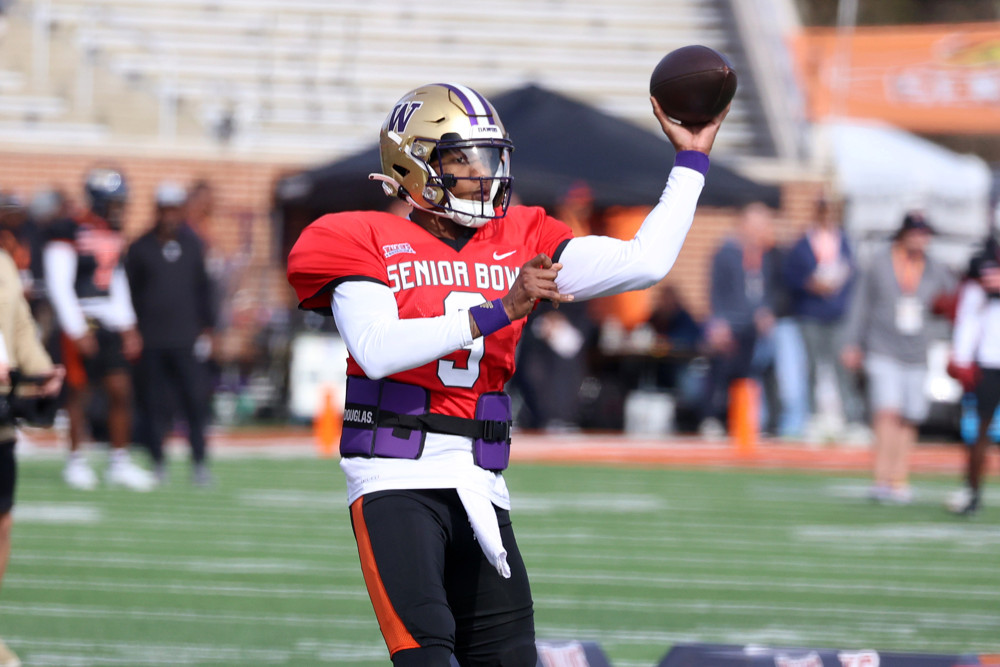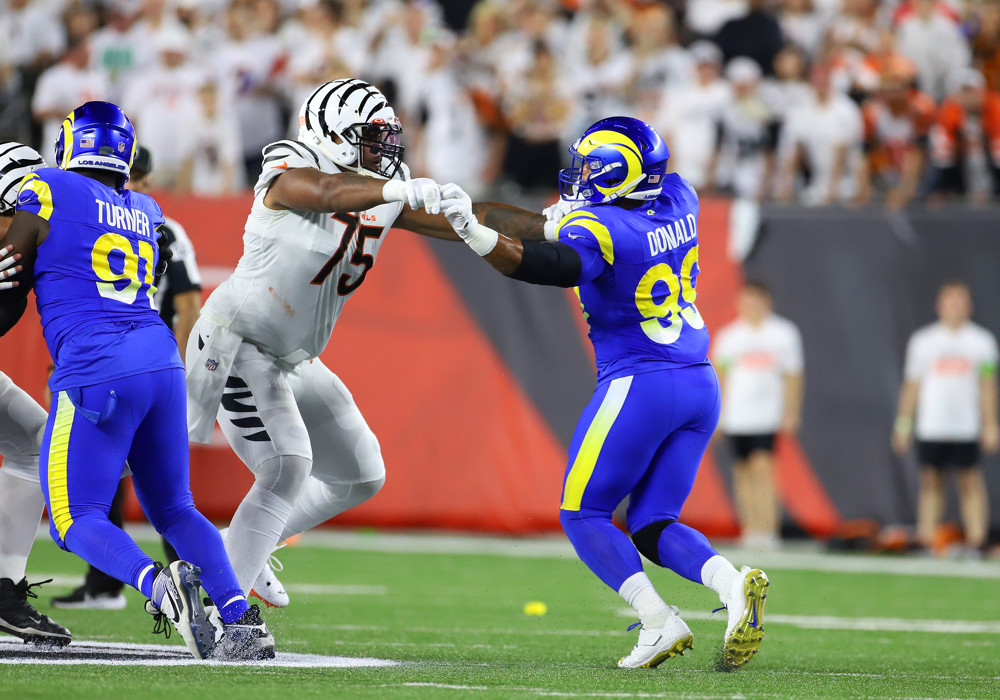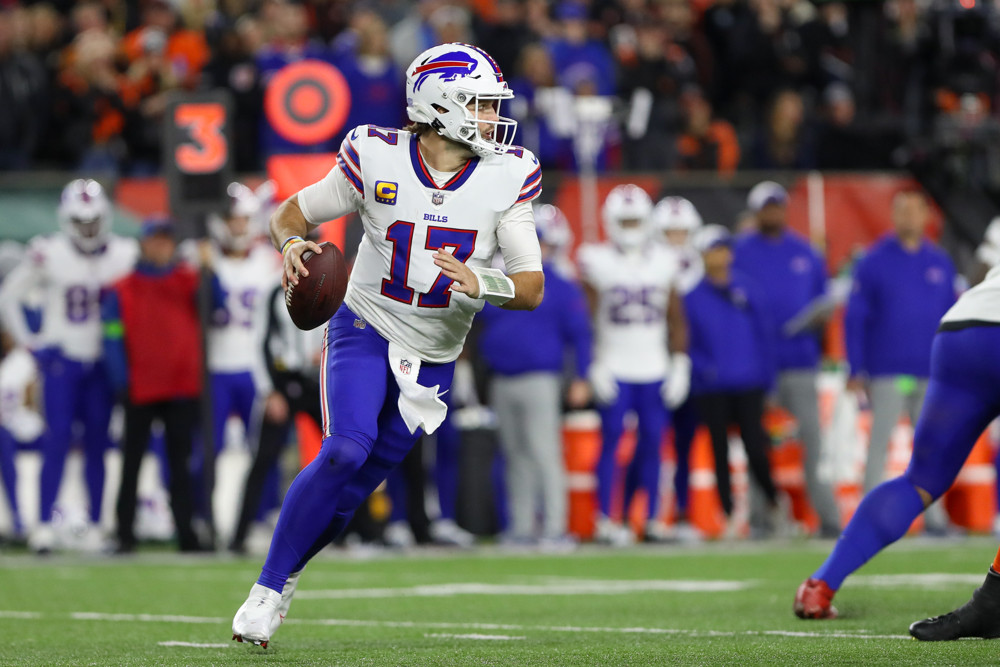
This has been an unusual season for the Kansas City Chiefs. Sure, the Andy Reid-coached offense is still good. Patrick Mahomes is performing toward the top of the league. Travis Kelce leads all tight ends in receiving DYAR. That’s all typical, but it hasn’t been the story dominating Kansas City’s season. For the first time in the Reid-Mahomes era, the Kansas City Chiefs are a defense-led football team. During a postgame interview in Germany, Mahomes said the 2023 Chiefs defense isn’t just the best D he’s ever played with, he argued it’s the best in the league.
Mahomes isn’t far off. Kansas City ranks fifth in total defensive DVOA and EPA/play. If the season ended tomorrow, they would be the best Chiefs defense since 2015 and just the second group to finish top-10 since 2000. This isn’t coming off a fluke season with easy matchups, either. Kansas City has played the 11th-hardest defensive schedule by FTN’s numbers.
Kansas City has dominated that schedule thus far. Their pass rush has generated the second-highest sack rate in the league. The Chiefs secondary boasts the fifth-most passes defensed. While they’ve generated just eight interception-worthy throws, Kansas City has converted five into actual picks. They are structurally sound, tied for the league lead for fewest missed tackles. They’re aggressive, jarring a league-leading 16 forced fumbles. Sure, the Chiefs haven’t been perfect. The Chiefs’ 42.4% rushing success rate allowed is tied for sixth worst in the league, and they allow opponents to convert redzone trips into touchdowns just over half the time. This group has still been damn impressive.
Things get even more impressive when you take a look at the Chiefs’ ledgers. Kansas City has the third-least money spent on defense in the league. The two teams below them, the Los Angeles Rams and Arizona Cardinals,are 27th and 31st in defensive DVOA, respectively. It’s even more impressive when you realize that Chris Jones and Justin Reid make up $39.5 million of their $83.3 million defensive spend.
So how did this defense come to be? How has Kansas City built such an effective defense on such a tight budget? Prior to this season, the Chiefs had been in a state of perpetual defensive retooling since Mahomes became a full-time starter. In the 2018 offseason, Kansas City traded Marcus Peters to the Rams and lost Tamba Hali and Derrick Johnson to free agency. A year later, when Steve Spagnuolo was hired to be defensive coordinator, big names like Eric Berry, Justin Houston, Dee Ford, and Steven Nelson all walked in favor of fresh faces.
The Chiefs have never been afraid to let good talent go in favor of cheaper options. The Chiefs released Eric Berry two years into a market-setting six-year, $78-million contract. They replaced him with Tyrann Mathieu, who had spent his last two seasons on two different teams, on a three-year $42-million contract. Still high, but no longer top-of-market. Mathieu would eventually leave in free agency in 2022. The Chiefs signed another Texans safety, Justin Reid, to a three-year $31.5-million contract in his place. Reid, 26, ranks 14th in APY among safeties. He is well below similarly-aged contemporaries like Marcus Williams, Budda Baker, and Jalen Thompson and only $1.5 million per year ahead of Mathieu’s current deal with the Saints.
Kansas City often tries to save on the margins with buy-low fliers on young players. The Chiefs brought in former 28th overall pick Taco Charlton on a one-year deal in 2020 to plug up a defensive end rotation. That wa the same year Kansas City traded for Giants first-rounder DeAndre Baker, acquired three days after multiple armed robbery charges were dropped. This year, Kansas City signed former 49ers edge rusher Charles Omenihu to a two-year, $16-million deal after he was charged with two misdemeanor counts of domestic battery.
Mostly, Kansas City has focused on rebuilding through the draft. In their last six drafts, 26 of their 41 draft picks have been spent on the defense. The majority of those came at a premium, with 12 of 19 being drafted in the first three rounds. The Chiefs certainly have a type when drafting. Since Spagnuolo took over in 2019, the Chiefs defense has loaded up with defensive players with extremely high relative athletic scores.
According to MathBomb, which tracks the RAS scores of all drafts back to 1987, Kansas City has secured some absolute specimens in the draft. Leo Chenal is the highest of the bunch, with a score of 9.99 out of 10.0 compared to all other linebackers. Most of the Chiefs’ marquee young defensive names are all historically some of the best of their position. Chenal, Sneed (9.45), Juan Thornhill (9.77), Willie Gay (9.61), Trent McDuffie (9.46), and George Karlaftis (9.24) are all in an elite percentile all-time at their relative position. This year’s first-round edge rusher, Felix Anudike-Uzomah, finished with an 8.73 RAS, mostly from his relatively undersized frame.
That athleticism is certainly needed in the Spagnuolo defense. The Chiefs DC employs exotic blitzes out of varied fronts. The Chiefs’ 32.1% blitz rate in 2023 is seventh-highest in the league. That requires defensive backs to be able to operate one-on-one without much help. Safeties and corners must have the positional versatility to line up at the line, in the box, in either the slot or outside, or in deep zones. Linebackers must be able to play sideline to sideline. Interior defensive linemen generate a substantial amount of this team’s defensive pressure.
In early years, Spagnuolo was able to get by with a bend-don’t-break defense in the regular season that ramped up into the playoffs. He executed a similar playoff ramp-up during his Super Bowl-winning season with the Giants.
| Steve Spagnuolo Defenses, Reg Season vs Playoffs | ||||
| Team | Year | Reg Sea DVOA | Rk | Playoff DVOA |
| NYG | 2007 | -3.7% | 12 | -23.0% |
| NYG | 2008 | -7.7% | 7 | -25.8% |
| NYG | 2016 | -9.6% | 4 | 14.2% |
| KC | 2019 | -5.1% | 12 | -4.1% |
| KC | 2020 | -0.7% | 16 | -18.2% |
| KC | 2021 | 2.4% | 22 | 1.3% |
| KC | 2022 | -2.0% | 14 | -9.6% |
That couldn’t last forever, though, and Kansas City knew that. Most of the Chiefs’ cap has been dumped into Mahomes, Kelce, and the offensive line. Receivers have come on a budget, and the whole defensive budget has been even leaner than that. Draft picks, cheap FA bets, and fliers are the name of the game.
The result: a defense that is currently youngest in the league by snap-adjusted age, per ESPN’s Bill Barnwell. Even Chris Jones, the oldest starter on this defense and the lone big-contract player on this defense, is just 29 years old. There’s a reason to think a defense this young might not execute. Young players take time to develop; the old developmental projects like Sneed and Michael Danna have had to grow up quick so they can now mentor the young guys. In a scheme as demanding as Spagnuolo’s, these hyper-athletic youngsters could either shine or sink this team altogether.
We saw flashes of it last year. Trent McDuffie didn’t crack the Chiefs’ cornerback rotation as a rookie until midway through last year. Kansas City allowed a 38.7% DVOA to WR1s before he arrived and a 5.6% DVOA after. Karlaftis had 6.5 of his seven sacks in the final six weeks of the season. But those second-half improvements came alongside a ton of noise. For example, last year’s Chiefs allowed a -4.3% DVOA on third-and-short while also allowing a 21.9% DVOA on second-and-short. If that obvious outlier wasn’t sustainable year-to-year, why would the rest of the youngsters’ production carry over?
If anything, those flashes may have undersold what came next. Through nine games this year, the Chiefs are third in the league against WR1s with a -39.5% DVOA. In nine games, Karlaftis has nearly surpassed his sack totals and pressure numbers over 17 starts. His success has opened up more opportunities on the defensive line. Opposite-side edge Michael Danna and defensive tackle Chris Jones both have five sacks apiece this year, while off-ball linebacker Drue Tranquill is on pace for a career-high in sacks. Confidence in the defensive line’s ability to get pressure with just four rushers allows Spagnuolo to dial up more dime coverage on passing downs, creating tougher looks for quarterbacks.
Once these young players learned the defense, it created a domino effect for massive success. Early in the season, McDuffie told the Athletic that the defense “definitely felt like we could’ve done more” throughout their Super Bowl run. More anecdotally, the Ringer’s Danny Heifetz shared via X that he overheard two rookie defenders laughing in the locker room after the Super Bowl because they won a title without understanding their own defense. They joked about how good they would be next year when they actually learn it.
Now, this defense is no laughing matter. It couldn’t come at a better time, either. The Chiefs offense lacks a legitimate No. 1 receiver. The run game continues to struggle. Kansas City leads the league with 16 dropped passes. Mahomes, while still great, is not putting up the elite numbers of years past. In the biggest games this season–in Jacksonville, against the Chargers, versus Miami in Germany–the defense has stepped up to keep this team at 7-2.
At the end of declaring the Chiefs the best defense in the league, Mahomes vowed “we’re going to get this figured out, I promise you.” If that happens, best of luck to the rest of the league.






